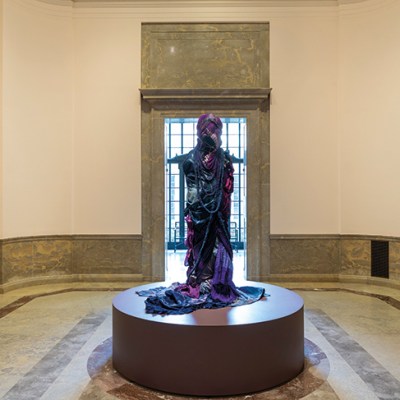For many observers of the museum world, the passions aroused by debates about deaccessioning, or disposal of artworks, are inexplicable. As so often in the inscrutable preserves of the art world, hidden agendas proliferate and demand constant vigilance about this long-standing practice.
In late September, the Association of Art Museum Directors (AAMD), the membership organisation of more than 225 large art museums in North America, enacted new guidelines with respect to deaccessioning practices. AAMD’s unforeseen suspension of rigorous deaccessioning rules at the outset of the pandemic elapsed on schedule in April this year, after apocalyptic predictions of museum closures came to naught. The new changes to acceptable practice include limiting the allocation of funds realised from the sale of art to the ‘direct care’ of objects in permanent collections. Cogent explanations of what is meant by ‘direct care’ in the guidelines countenance such routine tasks as matting, framing, and the provision of installation hardware.
Some within the AAMD have objected to the new guidelines, arguing that the ‘direct care’ exception invites the potential for repurposing the proceeds of sales for operating expenses, since in the end every museum sets its own collection policies. The concern is in part that when asked to help cover end-of-year revenue shortfalls, trustees may see the collection as a piggy bank rather than a lasting repository of cultural heritage assembled for public benefit, and will ask the museum director: ‘Money problems? Why not sell a Picasso?’
The commercial misadventures of art museums in the last generation range from presenting exhibitions sponsored by the very brands they extol, to renting out facilities to social and corporate clients with minimal regard for ethical or reputational consequences, and to charging exorbitant admission fees. A feverish hunt for earned income has diminished the efficacy of requests for contributions from trustees (whose wealth may be derived from newly unacceptable sources). This has led some directors to accept massive fees in exchange for loaning precious or fragile objects to questionable venues with minimal educational benefit. This trend has placed permanent collections in a new light: as assets to be deployed in the furtherance of financial health rather than as the cherished evidence of our shared creative past. And that new light has in turn tempted museum leaders to dispose of artworks acquired by their predecessors to meet new goals, such as diversifying a museum’s holdings. But most directors believe that a pressing and overdue commitment to diversity, equity, inclusion and access (DEIA) should catalyse new contributions rather than encourage the monetisation of collections built over generations.
Other related issues loom. The ethical is trumping the legal as claims for the deaccessioning and restitution of illicitly removed antiquities are accelerating and succeeding, with no money changing hands. In the past it was unthinkable to sell works of art by living artists, out of a belief that their reputation, earning power, and market valuation would be diminished by museums shedding their works. That taboo is weakening, since most of the value in the art market is in contemporary art. New trustees are more often than not contemporary art collectors, for whom flipping artworks by living artists is second nature. And flipping is already done by some museums: when artworks are donated but not accessioned, museums can sell them after three years without jeopardising the donor’s charitable deduction – and without triggering sanctions from the AAMD.
A more existential challenge is the declining commitment of some museum leaders to displays of their permanent collections. The Indianapolis Museum of Art earlier this year eliminated 30,000 square feet of permanent collection galleries, outsourcing its entire 4th floor to Grande Experiences, an Australian company producing floor-to-ceiling projections. The Los Angeles County Museum of Art is proceeding apace with an estimated $900 million demolition and contraction of its facilities, reducing gallery space devoted to the permanent collection, and favouring instead smaller thematic displays and exhibitions, more often than not of recent art. For some directors unschooled in art history, the contents of galleries of ‘pre-C’ (pre-contemporary) art are imagined to be of dwindling interest to new generations of prospective visitors. Old Masters and objects from the other 5,000 years of art history are going unresearched and making fewer appearances than temporary exhibitions of contemporary art and ‘immersive experiences’ begetting selfies.
As a result of all these forces, clear limits on deaccessioning are warranted. With some 95 per cent of museum collections off view at any given time, directors must constantly explain that storage is largely for works made of fugitive media (photographs, watercolours, prints, drawings, textiles, raffia), as well as less splashy objects that evoke important themes, places and periods. Just as a library does not cull its collections of all but bestsellers frequently consulted by readers, museums should refrain from the short-sighted disposal of artworks that may be out of fashion today but relevant again tomorrow. The salutary clarification by AAMD of deaccessioning rules may help staunch the bleeding for now, but there are larger questions about our commitment as a society to preserving evidence of the past that informs our present – and all the obligations that commitment brings.
Maxwell L. Anderson is president of the Souls Grown Deep Community Partnership & Foundation and a past president of the Association of Art Museum Directors.



